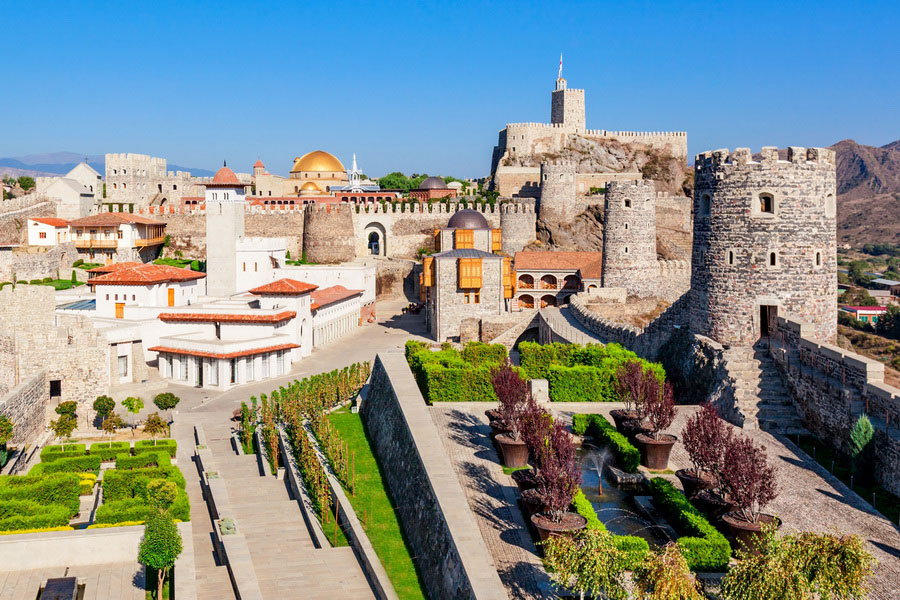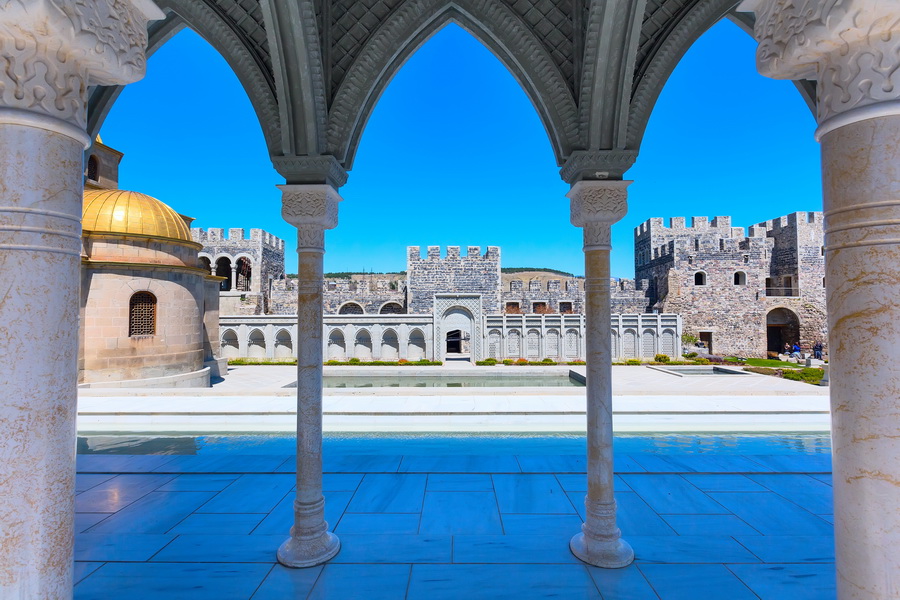Akhaltsikhe, Georgia

Things to Do and Sightseeing Tours in Akhaltsikhe
There is a beautiful small town of Akhaltsikhe with its millennium long history on one of the roads from Tbilisi to the Black Sea shores. It is situated on the south-west of Georgia, not far from the border of Turkey, and has had a strategic significance lately as it was on the crossroad of highways. Even its name says of its military past: Akhaltsikhe means “new fortress” in Georgian and the recently restored Rabati fortress in Akhaltsikhe is the evidence to this.
Today Akhaltsikhe is an administrative centre of the region Samtskhe-Javakheti, its population is about 20 thousand people that makes it a large city in this part of the country. There are few roads leading to Tbilisi, Batumi, Borjomi, Gori, Kutaisia and Turkey. The landscape of Akhaltsikhe and its surroundings are a combination of fields and hills, and the city itself is divided into two parts: an old city on the hill and a new region on the plain.
The history of Akhaltsikhe is more than thousand years old. According to the written sources, the city was founded in the 12th century, though it is believed that the first large settlement already appeared here in the 10th century. It was then called Lomsiya, and was the residence of Jakeli princes who were having intestine strives and were even infringing on the central power of Georgia. It was this Prince family who erected this new fortress here that had given the name to the city. In the 14-15th centuries Akhaltsikhe was a subject to destruction several times: in 1393 Tamerlane had passed this land with his army, and in 1486 it was burned by the army of a Mongol khan Jakub. Despite this, due to strategic significance and big trading routes, Akhaltsikhe would rise from ashes every time.

In 1578 the city was seized by the Turks of the Ottoman Empire who made it their outpost. During the Russian-Turkish war of 1828-1829, there was a battle in the surrounding of Akhaltsikhe, after which the Turkish army receded and surrendered the Rabati fortress. Russian troops consolidated its grip on the land and later Turks could not return the fortress under their control. When the war was over, Akhaltsikhe turned into usual provincial town where no more significant events took place. With the time, the fortress was deserted and went to ruins.
During the entire 20th century Akhaltsikhe was unnoticed point in the south of Georgia with a quiet steady life. There a small bus station, city market, drama theatre appeared. a small square and the Kostava square became a festive venue, where locals would gather in the evenings. Akhaltsikhe would even stay unnoticed until the massive reconstruction of the Rabati fortress. In August 2012, after 15 months of hard work, the renewed fortress was officially opened and became one of the popular touristy sights of Georgia. It triggered building of small hotels and guesthouses around.
In addition, there are other attractions in Akhaltsikhe. There is an Armenian Catholic Church Surb Nshan on the small hill not far from the fortress built in the 15-16th centuries. You may find domes of abandoned sulphur baths in one of the quarters. It is important to mention the monument to the Queen Tamara, a well respected historic figure by locals, and the holiday Tamaroba dedicated to her is celebrated with a particular thrill. Tamaroba holiday is celebrated on 14 May.

List of Akhaltsikhe sights can be extended with other monuments located in the city vicinity. There is a monastery Sapara 10km away from the Akhaltsikhe centre. Bit further away there are Kokhta fortress and Shoreti monastery. In 30km to the west there are Abastumani observatory and Atskuri fortress located. There are many interesting places to see and learn, and there is a well-known cave city Vardziya only 60km away from Akhaltsikhe.
Thus, passing by Akhaltsikhe, don’t underestimate this town thinking it is small and quiet village with the only attraction. Akhaltsikhe is a gem that has only recently got in the line of the jewels of Georgian cities.


